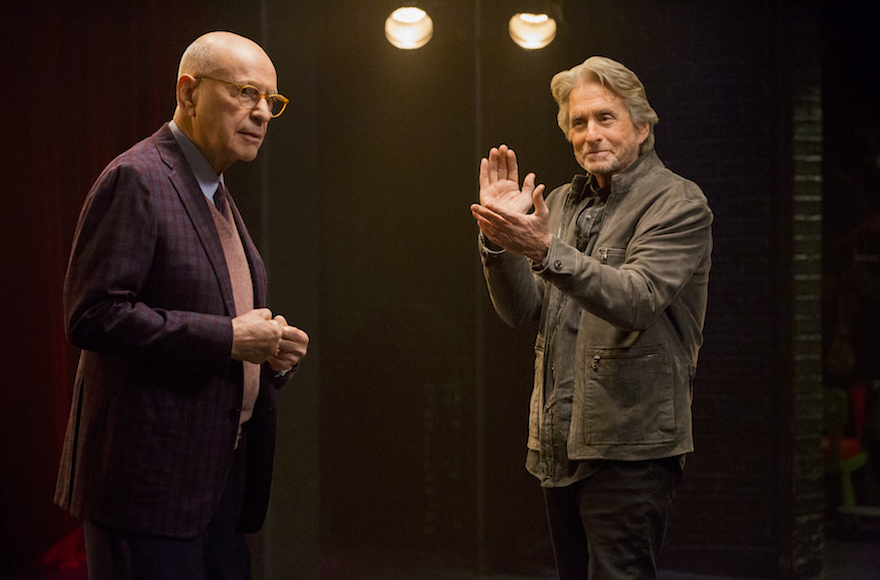Acting, Sandy Kominsky (Michael Douglas) tells his students in the second episode of The Kominsky Method, is how we explore what it means to be human. “Experience the feelings that come up, no matter how painful,” he urges them, “because that grief, that unrelenting sorrow—that’s the raw material. That’s the gold an actor mines to create great performances.”
It’s an outburst that’s more telling than it seems. The Kominsky Method insists that viewers empathize with Sandy and Norman and their various laments (and with Norman, whose wife dies of cancer early in the series, it finds its most powerful and moving scenes). But Lorre doesn’t seem to have empathy to give for anyone else. Not for Sandy’s students, who are glibly written and ditzy at best. Not for Norman’s daughter, Phoebe (Lisa Edelstein), an opioid addict who’s treated as comic relief when she shows up high for her mother’s funeral and dispatched to rehab as an excuse to get Norman and Sandy on a road trip. Not for Mindy (Sarah Baker), Sandy’s daughter, who fills the customary sitcom role of the nagging wife. And not for Lisa, a divorcée whose characterization (despite Travis’s welcome presence and irrepressible charisma) amounts to a failed marriage and a sociopathic son.
In glimpses, The Kominsky Method shows what it could have been, given a more generous spirit and a willingness to dig deeper. Arkin is superb as Norman, a man felled by grief but still possessing an impulse to crack exceedingly maudlin jokes (“You talk to one ghost and suddenly you’re in a Yiddish version of Macbeth”). His chemistry with Douglas is truly endearing, and the setup for the show demands a reckoning of some sort between the successful and surprisingly powerful Norman and the less prosperous Sandy. But Lorre seems stuck in sitcom mode: He’s happiest when the pair are cheerfully expressing their fish-out-of-water befuddlement about chip-and-pin readers and bitcoin and being “trendy” on Twitter.

























